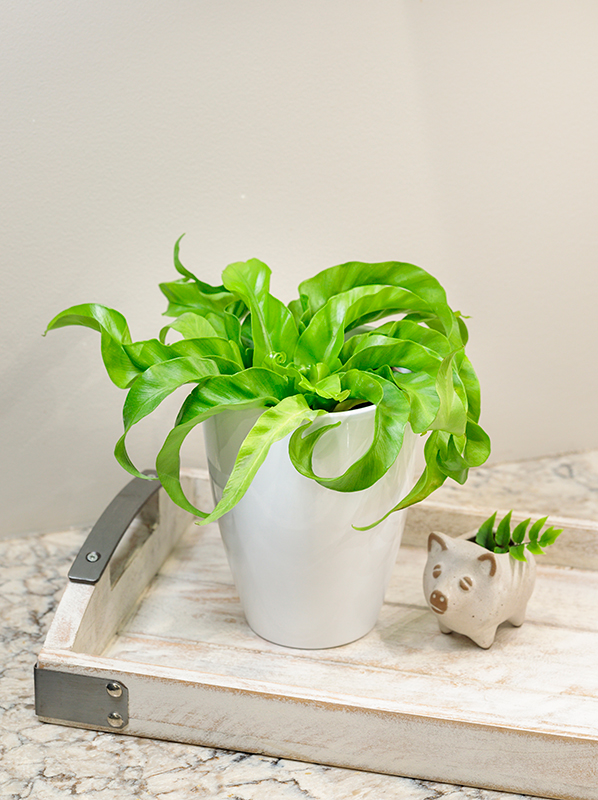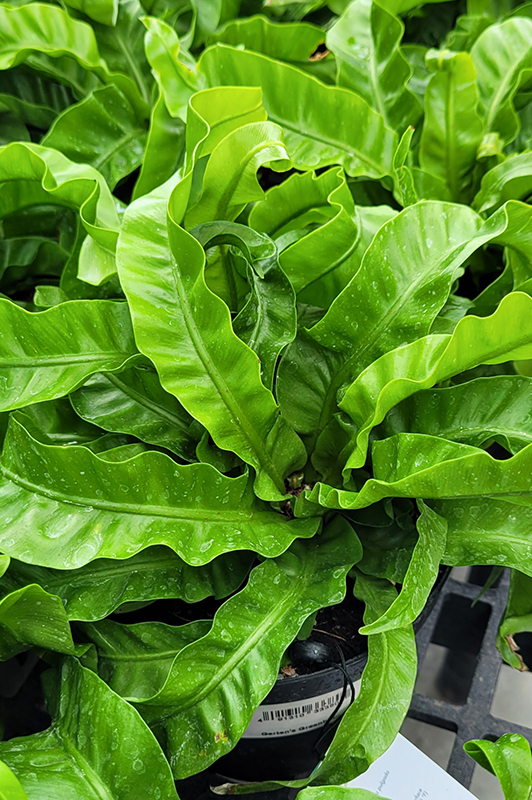NETPS
Living Lace™ Hurricane Japanese Bird's Nest Fern
Asplenium antiquum 'Hurricane'

Living Lace™ Hurricane Japanese Bird's Nest Fern in full
Living Lace™ Hurricane Japanese Bird's Nest Fern in full
(Photo courtesy of Proven Winners)

Living Lace™ Hurricane Japanese Bird's Nest Fern foliage
Living Lace™ Hurricane Japanese Bird's Nest Fern foliage
(Photo courtesy of NetPS Plant Finder)
Height: 24 inches
Spread: 24 inches
Sunlight:
![]()
![]()
Group/Class: Leafjoy Houseplants
Brand: Proven Winners
Description:
A striking, broad, strap-leaved fern with a distinctive shape to set it apart; glossy green, undulating leaves twist and swirl around a nest-like center; an attractive indoor accent plant for low to medium light
Features & Attributes
Living Lace™ Hurricane Japanese Bird's Nest Fern is primarily valued in the home for its interestingly mounded form. Its attractive twisted narrow leaves emerge lime green, turning dark green in color with hints of chartreuse throughout the year.
This is an herbaceous houseplant with a mounded form. Its relatively coarse texture stands it apart from other indoor plants with finer foliage. This plant usually looks its best without pruning, although it will tolerate pruning.
Planting & Growing
When grown indoors, Living Lace™ Hurricane Japanese Bird's Nest Fern can be expected to grow to be about 24 inches tall at maturity, with a spread of 24 inches. It grows at a slow rate, and under ideal conditions can be expected to live for approximately 15 years. This houseplant performs well in both bright or indirect sunlight and strong artificial light, and can therefore be situated in almost any well-lit room or location. It prefers to grow in moist to almost wet soil, and will even tolerate some standing water. As such, the surface of the soil should be kept consistently moist to the touch, and you can expect to water this plant two or more times each week, especially if it's growing in a lower-humidity environment. Be aware that your particular watering schedule may vary depending on its location in the room, the pot size, plant size and other conditions; if in doubt, ask one of our experts in the store for advice. It will benefit from a regular feeding with a general-purpose fertilizer with every second or third watering. It is particular about its soil conditions, with a strong preference for rich, acidic soil. Contact the store for specific recommendations on pre-mixed potting soil for this plant. Be warned that parts of this plant are known to be toxic to humans and animals, so special care should be exercised if growing it around children and pets.
There are many factors that will affect the ultimate height, spread and overall performance of a plant when grown indoors; among them, the size of the pot it's growing in, the amount of light it receives, watering frequency, the pruning regimen and repotting schedule. Use the information described here as a guideline only; individual performance can and will vary. Please contact the store to speak with one of our experts if you are interested in further details concerning recommendations on pot size, watering, pruning, repotting, etc.
-- THIS IS A HOUSEPLANT AND IS NOT MEANT TO SURVIVE THE WINTER OUTDOORS IN OUR CLIMATE --
A NetPS Plant Finder tool